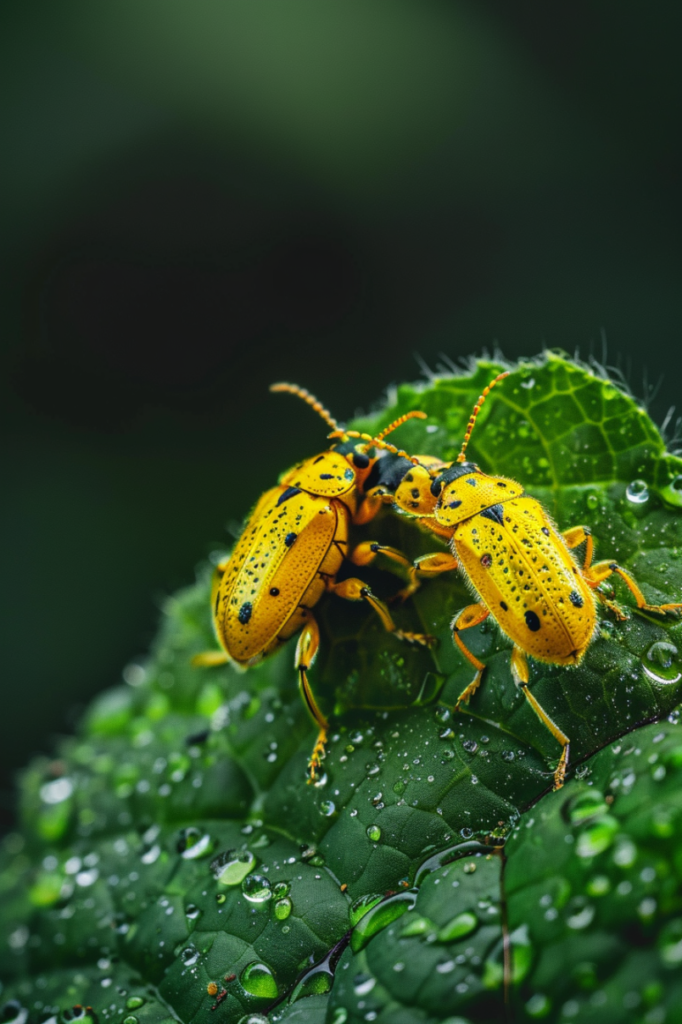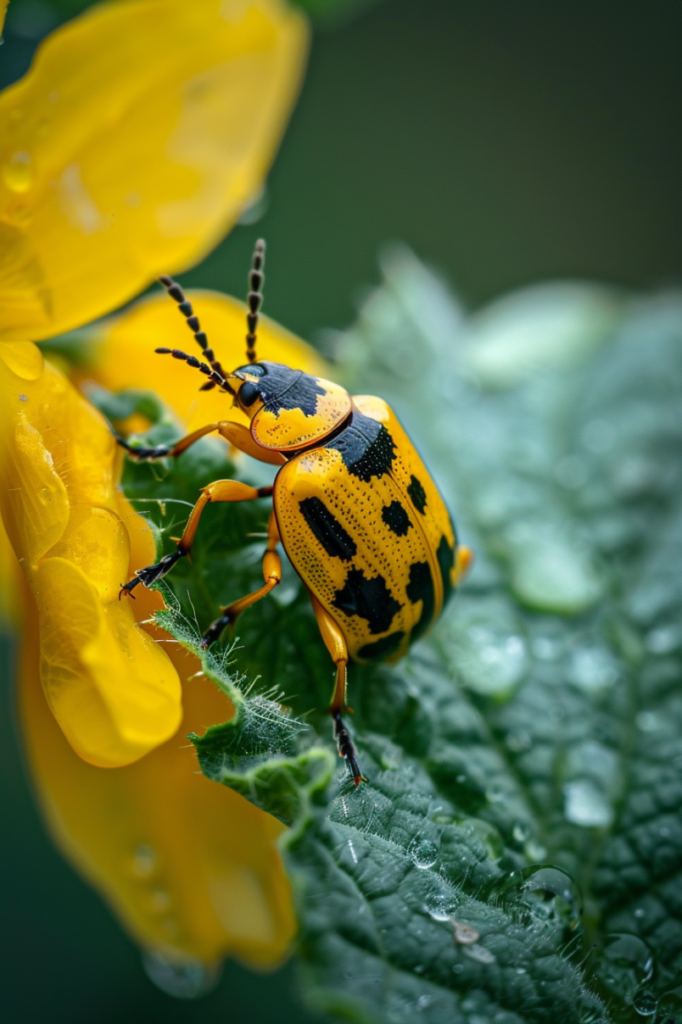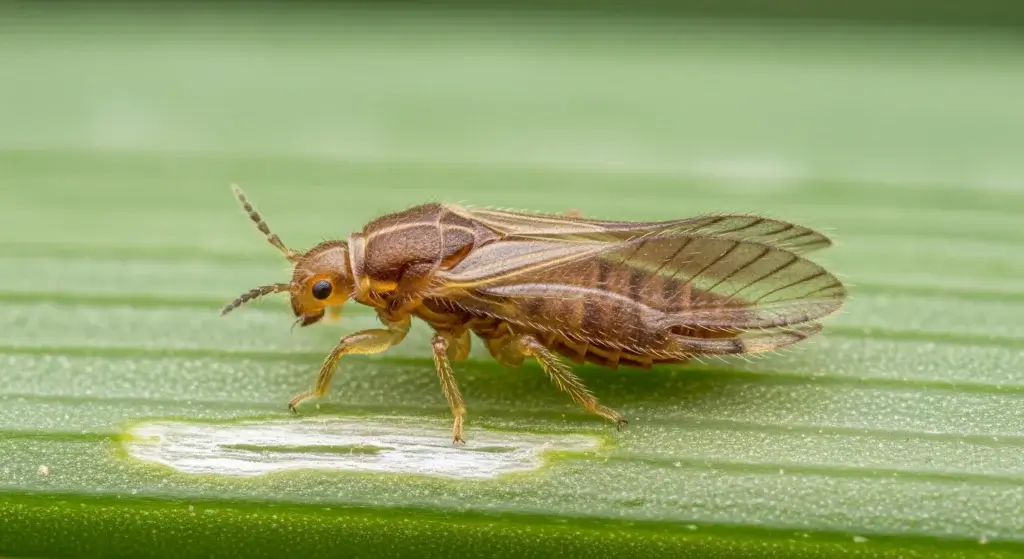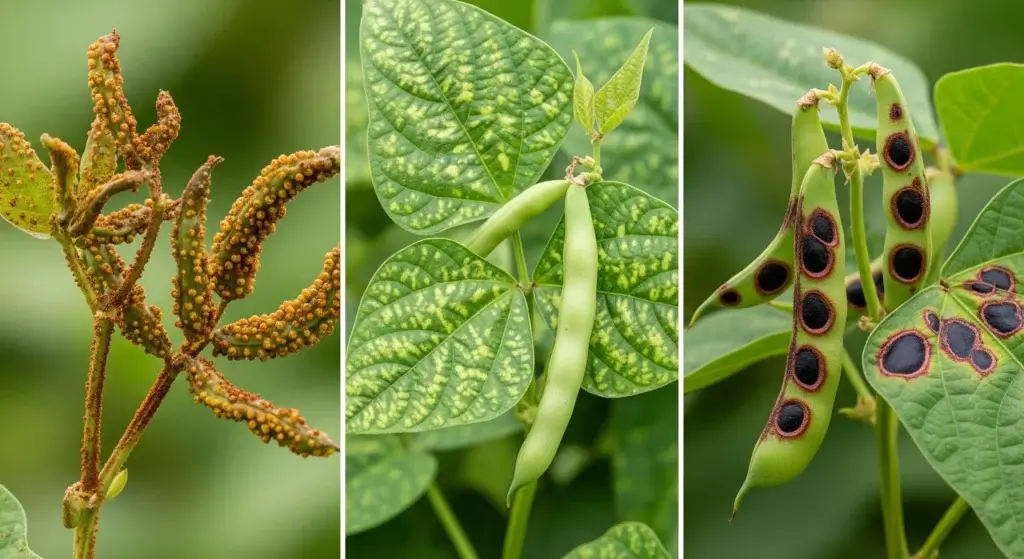
Cucumber beetles are a common pest that can cause significant damage to your garden, particularly to plants in the Cucurbitaceae family, such as cucumbers, zucchini, and yellow squash.
In this blog post, we’ll discuss various organic and cultural control methods to help you manage cucumber beetle populations and protect your crops.
Types of Cucumber Beetles
Cucumber beetles, the bane of many gardeners, come in two main varieties: striped and spotted.
These pests can wreak havoc on cucumber plants and other members of the cucurbit family.
Understanding the differences between these two types of cucumber beetles can help gardeners better manage and control infestations.
- Read also: Cracking The Signs of Pest in Vegetables
- Read also: Protect Your Harvest! Identifying Specific Vegetable Pests
Striped cucumber beetles
- Striped cucumber beetles, as the name suggests, have distinctive black and yellow stripes running along their bodies. They are primarily found in the eastern and central regions of the United States.
- These beetles are notorious for feeding on the leaves, stems, and fruits of cucumber plants, as well as other cucurbit crops such as squash and melons.
- Striped cucumber beetles are also carriers of bacterial wilt, a disease that can devastate cucumber plants. When they feed on infected plants, they pick up the bacteria and spread it to healthy plants as they move from one plant to another.
Spotted cucumber beetles
- Spotted cucumber beetles, on the other hand, have a yellowish-green body with black spots scattered across their wings and thorax. They are more commonly found in the western United States.
- Like their striped counterparts, spotted cucumber beetles are voracious feeders and can cause significant damage to cucumber plants and other cucurbits.
- Spotted cucumber beetles are also known to transmit diseases such as bacterial wilt and cucumber mosaic virus, further complicating efforts to control their populations.

Organic and Cultural Controls
Managing cucumber beetle infestations in your garden using organic and cultural controls is both effective and environmentally friendly.
Here are some detailed strategies you can employ:
Monitoring
Regularly inspect your cucumber plants for signs of cucumber beetles, such as small holes in the leaves or yellowing of the plant.
Early detection allows for prompt intervention and prevents infestations from worsening.
Row covers
Utilize floating row covers to physically block adult cucumber beetles from reaching your plants.
These covers act as a barrier, preventing the beetles from feeding on your crops.
Remember to remove the covers temporarily during flowering to allow for pollination by beneficial insects.
Trap cropping
Implement trap cropping by planting sacrificial plants, such as squash, near your cucumber plants.
Cucumber beetles are attracted to these alternative hosts, drawing them away from your main crop and reducing the damage inflicted on your cucumber plants.
Crop rotation
Rotate your crops regularly to disrupt the life cycle of cucumber beetles. By planting different crops in the affected area each season, you disrupt the beetles’ breeding and feeding patterns, ultimately reducing their population over time.
Beneficial nematodes
Introduce beneficial nematodes into the soil to target and kill cucumber beetle larvae.
These microscopic worms are natural predators of the larvae, effectively reducing their numbers and preventing future generations from damaging your plants.

When to Use Organic Sprays
Using organic sprays to control cucumber beetles can be an effective strategy, but it’s crucial to understand when and how to use them properly.
Here are some guidelines to help you make the most of organic sprays:
Pyrethrin
Pyrethrin is a natural insecticide derived from the dried flower heads of African Pyrethrum.
It’s effective against cucumber beetles but should be used cautiously because it can also harm beneficial insects.
Apply pyrethrin spray early in the morning or late in the afternoon when bees and other pollinators are less active to minimize their exposure.
Spinosad
Spinosad is a toxin that acts as a feeding deterrent for insects. While some formulations of spinosad are effective against cucumber beetles, not all are organic-approved.
Ensure that you select a spinosad product that meets organic standards and follow the application instructions carefully to minimize environmental impact.
Kaolin clay
Kaolin clay forms a physical barrier when sprayed on plants, making them less attractive to cucumber beetles.
It works by gumming up the beetles’ mouthparts, causing them to spend more time grooming and less time feeding.
Apply kaolin clay spray to your cucumber plants before beetle activity increases to prevent infestations.

- Read also: Understanding and Preventing Grasshopper Plant Damage
- Read also: Conquer Your Garden: How To Get Rid of Rats in The Garden
Conclusion
Implementing these organic and cultural control methods enables you to efficiently manage cucumber beetle populations and safeguard your crops.
Consistent monitoring and timely intervention are essential for maintaining a thriving garden.



